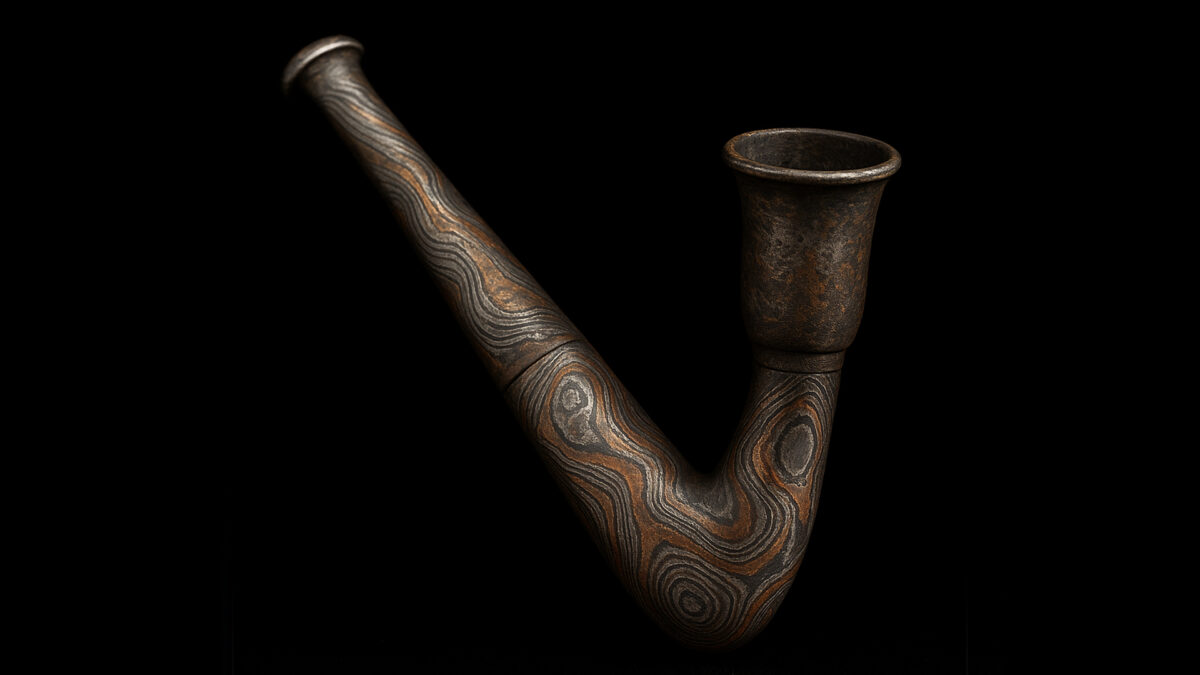- Mokume Gane: A Japanese Invention at the Depths of Traditional Beauty
- 1. Foundations of Japanese Aesthetic Sensibility
- 2. Symbolism of Mokume Gane in the Japanese Context
- 3. Formalization of Technique and the Meaning of Patterns
- 4. Dialogue with Contemporary Art
- 5. Academic Significance from a Scholarly Perspective
- Conclusion
Mokume Gane: A Japanese Invention at the Depths of Traditional Beauty
Introduction
Mokume Gane is one of the most distinctive techniques in Japanese traditional crafts. Its mesmerizing patterns are more than mere decoration—they reflect Japan’s innate aesthetic sensibility and deep relationship with nature. This article reinterprets Mokume Gane from its origins in the Edo period to the present day, revealing the true value embedded in its technique and spirit through the lens of Japanese beauty.
1. Foundations of Japanese Aesthetic Sensibility
1-1. The Aesthetic of Wabi and Sabi
Wabi–Sabi is the appreciation of imperfection, transience, and subtle asymmetry. The patterns of Mokume Gane are never uniform; each is unique and characterized by natural fluctuations. This directly aligns with the Japanese aesthetic principle that “imperfection is a form of perfection.”
1-2. The Philosophical Background Supporting Wabi–Sabi
Influenced by Zen and the Way of Tea, Japanese culture values harmony with nature, simplicity, and the beauty of empty space (ma). Mokume Gane patterns do not assert themselves with aggression. Rather, they express with quiet strength—engaging the viewer’s inner world in contemplative dialogue. This is a clear embodiment of core Japanese aesthetics.
1-3. Historical Context and the Birth of Mokume Gane
Mokume Gane is believed to have originated in the early Edo period, rooted in the redecoration of swords and armor. By layering precious metals like gold, silver, and copper to produce intricate patterns, this technique both elevated the dignity of arms and served as a medium for expressing the uniquely Japanese sensibility of wabi. (Note: Some historical details remain unconfirmed due to incomplete documentation.)
2. Symbolism of Mokume Gane in the Japanese Context
2-1. Fusion with Shintō and Nature Views
In Shintō, nature is sacred—trees, rocks, and waterfalls are revered as vessels of divinity. The patterns in Mokume Gane, reminiscent of tree rings or geological strata, evoke a sense of organic generation and invite viewers into a sense of oneness with nature.
2-2. Design and Spirituality in Weapon Ornamentation
When applied to swords, Mokume Gane enhanced their value as “weapons bearing beauty.” Amid the peril of battle, samurai found spiritual meaning and discipline in such ornamentation. Beauty was not simply relative—it was a symbol of strength itself. (Note: Some mentions exist in historical texts, but direct examples of application remain limited and partly unverified.)
2-3. Influence on Post-Meiji Craftworks
During the Meiji era, as Japanese crafts entered the export market to Europe, Mokume Gane became emblematic of Japanese ornamental beauty abroad. It was especially prized in obi-dome, buttons, and personal adornments, gaining value as a symbol of exotic Japan. In this way, Mokume Gane acquired additional “cross-cultural significance” beyond its domestic meaning.
3. Formalization of Technique and the Meaning of Patterns
3-1. Narrative Quality Embedded in Patterns
Mokume Gane patterns—gentle stripes, wind-like curves, geometric shapes—function like visual poetry. Discontinuous lines may evoke rippling water or mountain ranges, suggesting a slow, flowing passage of time.
3-2. Carving and Polishing as Inner Dialogue
The act of revealing patterns through carving and polishing is not only technical but introspective—almost ritualistic. As the surface is worked, inner layers “awaken” and reveal themselves. This represents a profound interaction between artisan and material, a spiritual landscape.
3-3. Coexistence of Fineness and Boldness
Japanese beauty reveres both intricacy and boldness. Mokume Gane, formed by layering metals within millimeter tolerances, enables delicate lines and sweeping waves to coexist. This synthesis is the “resonant emptiness” (kōō suru yohaku) that defines Japanese craft aesthetics.
4. Dialogue with Contemporary Art
4-1. Reinterpretation by Contemporary Artists
Some modern artists now blend Mokume Gane with elements from abstract painting and contemporary sculpture. By manipulating layer thickness and carving angles, they bring Mokume Gane into expressive territory befitting modern art.
4-2. Fusion with Media Art
In recent years, artists have experimented with laser engraving and digital design, even creating circuit-like patterns on Mokume Gane without damaging the layers. These innovations are blurring the line between traditional craftsmanship and digital technology.
5. Academic Significance from a Scholarly Perspective
Mokume Gane is not merely a decorative method. It is a composite art–technique–culture medium that embodies “natural time,” “dialogue between skill and spirit,” and “fusion of beauty and function.” Interdisciplinary research across metallurgy, aesthetics, and cultural anthropology is expected to deepen in coming years.
Conclusion
Mokume Gane stands not as an isolated technique but as a convergence of worldview, spirituality, material culture, and contemporary expression within Japanese tradition. It is hoped that this article serves as a bridge between the essence of Japanese beauty and the profound significance of Mokume Gane.
(Note: Parts of this article draw upon ideas from cultural thinker Okakura Tenshin’s The Book of Tea and Zen philosophy, as well as modern interpretations of contemporary works. However, connections to specific pieces remain “uncertain.”)
References
(As listed in the original Japanese): Asahi Shimbun; Jewelry Seasons; The Transmission of the Techniques of Mokume Gane; Metal Jewelry Craft; Works of Living National Treasure Norio Tamagawa; Chōkin & Tankin Techniques I–II; Wikipedia; Kinkō Tsuba (Kōgei Shuppan); works by Ian Ferguson, Steve Midgett, Chris Ploof, etc.

